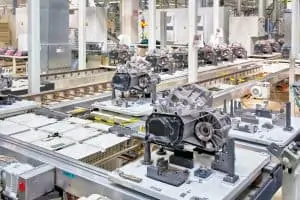
As new data centers are designed for the future to support AI, NVMe-oF solutions are set to change the formula, allowing organizations to scale storage resources independently of compute, GPU, and memory.
AI is rewriting the rules of innovation, reshaping not only industries but the infrastructure that supports it. As massive amounts of data is fed into these algorithms and large language models (LLMs), they generate an enormous amount of insights, information, predictions, and content. The numbers tell the story. According to IDC projections, more than 202 ZBs of data will be created in 2025[1] – much of it coming from powerful AI tools and applications.
This relentless surge in data is pushing AI data centers to their limits. Yet, traditional hyperconverged infrastructure (HCI) environments were not designed for the scale and complexity of AI workloads. Organizations are now finding that they must rethink how they support AI workloads and the explosive data growth without compromising speed or scalability.
As the calendar turns, the industry is unleashing a flood of innovative storage technologies and protocols that seek to solve these challenges. One is the adaptation of an old networking favorite: Non-Volatile Memory Express, more commonly known as NVMe.
Architectural Changes Will Help Empower AI Workloads
HCI environments were built for static data warehouses where known entities would access a stable dataset. As data and applications have moved to the cloud and spread across public and private infrastructure, these environments have struggled to keep up. This has resulted in either the underutilization of storage assets or the inability to scale storage independent of compute, GPU, and memory. HCI architectures compound these inefficiencies and dependencies in an already complex environment where efficiency, speed, and performance of AI systems are paramount. HCI is simply not fast enough.
Storage disaggregation – the act of scaling storage resources independently of servers – has emerged as a saving grace. Disaggregation has traditionally been implemented through a Serial-Attached SCSI interface (SAS), but performance and latency issues, especially at scale, make SAS untenable for AI-scale data centers. NVMe, based on the PCI Express (PCIe) protocol, is taking the place of SAS and is being extended out of the server into the network thanks to Ethernet.
Using Ethernet to extend the benefits of NVMe SSDs to shared pools of disaggregated storage dramatically improves the performance, efficiency, and scalability of storage assets. The resulting NVMe over Fabrics (NVMe-oF) enables today’s high-performance workloads at scale, providing low-latency sharing of NVMe SSDs over a high-performance Ethernet fabric to deliver similar performance to locally attached NVMe SSDs.
See also: What Is MLOps and How Will It Change the Data Center?
NVMe-oF is Enabling Technology for AI-Scale Data Centers
NVMe-oF allows organizations to break free from the traditional direct connections of storage and servers and helps datacenter managers disaggregate storage in an open composable disaggregated infrastructure (CDI) environment. This will allow them to share resources (including storage, compute, GPU, and FPGA) in a more intelligent, optimal, and efficient manner, allowing organizations to be more flexible and agile at dynamically allocating resources as needed for today’s data-intensive applications and workloads.
Here are three ways that NVMe-oF is changing the way organizations support the massive data needs of AI applications today:
1. NVMe-oF is enhancing the performance and speed of AI applications
Today’s AI workloads rely on lightning-fast data access. Operating at the speed of business gives decision makers the insights they need to act quickly at scale and maintain an advantage in today’s competitive marketplace. The ability to combine NVMe and Ethernet over fabric will yield much higher shared performance and capacity for high-performance, data-intensive applications – especially for applications that require real-time data processing and high-speed data access, such as big data analytics, AI, and database applications.
2. NVMe-oF is simplifying network architecture at a time when it’s needed the most
Ethernet is ubiquitous in the data center, in the cloud, and on the edge, and thereby applicable to various stages of workflows, whether centralized, distributed, or both. This makes Ethernet the most affordable and least complex of all the various fabric options. NVMe-oF can eliminate the need for IT teams to conduct additional training or certifications since it’s a tried-and-true technology in the data center and beyond. This will greatly simplify AI-scale data centers at a time when they are growing exponentially, providing much relief among data center architects at a time when they are under immense pressure to meet the growing needs of the business.
3. NVMe-oF SSDs are enabling AI-scale data centers
NVMe is already established in the data center, making NVMe-oF highly scalable. This makes it the ideal fabric option for both small-scale and large-scale storage environments. As needs change and data storage continues to explode, organizations will be able to easily add more NVMe-oF SSDs without having to scale compute resources as well. This will lead to better resource utilization and enable a more efficient pay-as-you-grow policy that will future-proof organizations looking to stay competitive and agile in the long term.
Scaling Smarter, Unleashing AI Potential
As new data centers are designed for the future, NVMe-oF solutions are set to change the formula, allowing organizations to scale storage resources independently of compute, GPU, and memory. The ability to add capacity as needed without impacting performance will be a boon for AI applications – giving organizations the go-ahead to develop, adapt, and scale new tools that create operational efficiencies, open new growth opportunities, and speed critical decision making.
[1] (IDC Source: Worldwide IDC Global DataSphere Forecast, 2024–2028, Doc #US52076424)






























